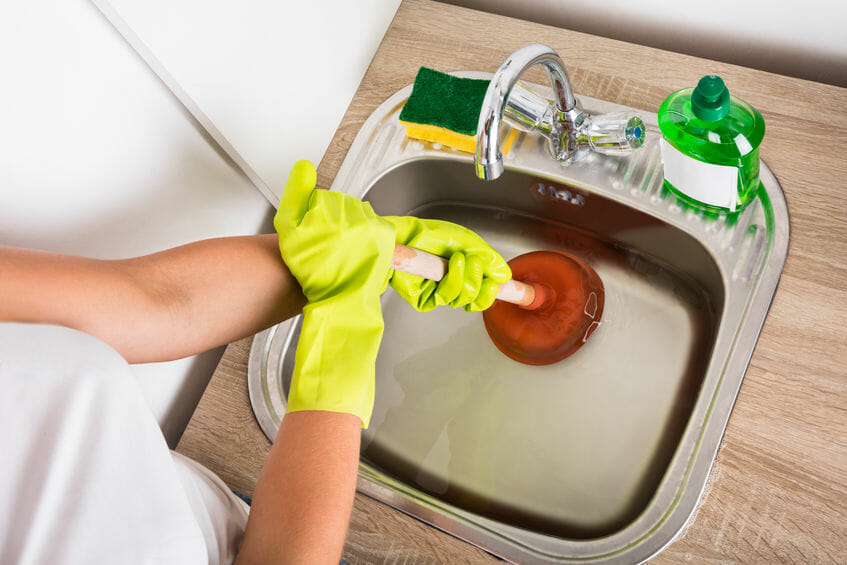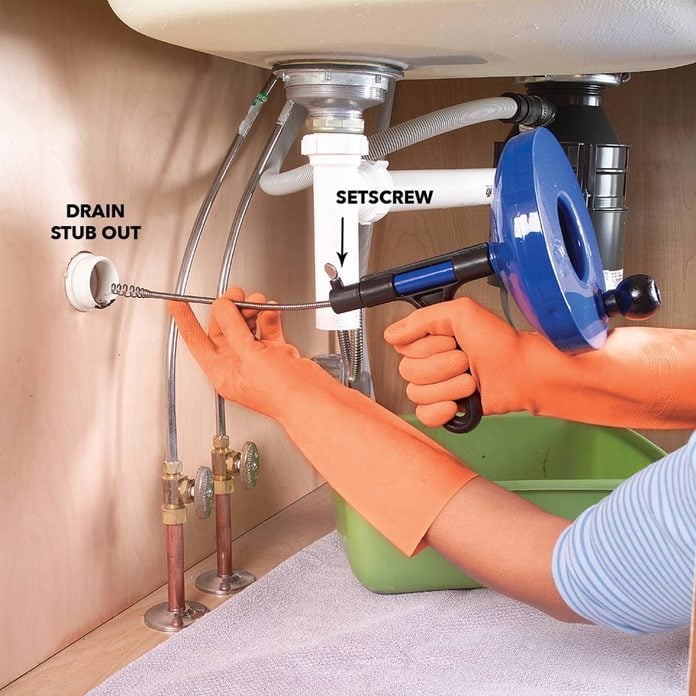When Water Won't Go Away - 6 Reasons Your Kitchen Sink Is Acting Up
When Water Won't Go Away - 6 Reasons Your Kitchen Sink Is Acting Up
Blog Article
Almost everyone is bound to have their personal theory about What To Do When Your Kitchen Sink Won’t Drain.

It's not normal for your kitchen area sink to block multiple times in one month. If your sink obstructs two times a week, there's some trouble taking place.
An obstructed kitchen drainpipe does not just decrease your jobs, it deteriorates your whole plumbing system, bit by bit. Here are some typical habits that encourage sink obstructions, and also how to avoid them.
You need appropriate garbage disposal
Reusing waste is fantastic, however do you focus on your natural waste also? Your cooking area should have two separate waste boxes; one for recyclable plastics as well as one more for natural waste, which can come to be garden compost.
Having actually a designated trash bag will help you and your household prevent tossing pasta as well as various other food residues away. Commonly, these residues soak up dampness and also come to be obstructions.
The mistake isn't from your cooking area sink in all
Possibly the trouble isn't from your cooking area sink, yet the whole water drainage system. In such an instance, you might discover that other sinks as well as drains pipes obtain obstructed every other week. You require a specialist plumbing solution to repair this.
You're tossing coffee away
Used coffee grounds and coffee beans still absorb a significant amount of moisture. They may seem tiny enough to throw down the drain, but as time goes on they begin to swell and take up more space.
Your coffee grounds should enter into natural garbage disposal. Whatever portion runs away (probably while you're depleting) will certainly be cared for throughout your regular monthly clean-up.
You've been eating a lot of greasy foods
Your cooking area sink might still get blocked despite having natural waste disposal. This may be due to the fact that you have a diet regimen rich in greasy foods like cheeseburgers.
This oil layers the insides of pipes, making them narrower and also even more clog-prone.
Use a bettor
Your pipe had not been taken care of properly to begin with
If you've been doing none of the above, but still obtain routine clogs in your cooking area sink, you should call a plumber. There may be a problem with just how your pipes were mounted.
While your plumber gets here, check for any kind of leakages or irregularities around your cooking area pipelines. Don't try to repair the pipelines on your own. This may create a mishap or a kitchen flood.
A person tried to clean their hair in the kitchen sink
There's a correct time and location for everything. The kitchen area sink is simply not the best area to wash your hair. Cleaning your hair in the kitchen sink will make it block sooner or later unless you utilize a drainpipe catcher.
While a drain catcher may catch the majority of the results, some strands might still get through. If you have thick hair, this may suffice to slow down your drain and also eventually develop an obstruction.
There's more dust than your pipes can take care of
If you get fruits straight from a ranch, you may discover even more kitchen dirt than other individuals that go shopping from a mall. You can easily repair this by cleansing the fruits and veggies correctly prior to bringing them right into the house.You need correct garbage disposal
My Kitchen Sink Won’t Drain - What Should I Do?
If Your Sink Has a Garbage Disposal...
Turn on the disposal. If the disposal hums and doesn’t turn, then there’s clog in the disposal unit.
Go to your circuit breaker panel, and switch off the circuit breaker to your garbage disposal.
Back in your kitchen, double-check that your garbage disposal is off by trying to turn it on. The disposal should not move, and it should not make any noise.
Lie down underneath your sink so that you can see and access the bottom of the disposal unit. Look for a hole that looks like the head of a hex-head bolt in the center of the unit.
Place an Allen wrench inside this hole and turn it from side to side until you feel a decrease in resistance and are able to rotate the wrench completely in a single direction. This action rotates your disposal’s blade manually.
Put the wrench aside, and press the disposal unit’s reset button or switch.
Flip your garbage disposal’s circuit breaker switch back on, and turn on the unit to see if the obstruction has cleared. If it hasn’t, repeat the steps above until the obstruction is removed.
How to Unclog a Kitchen Sink Drain
If you have a double bowl sink, seal one side of the sink with an airtight lid or a second plunger before plunging the other side. Otherwise, you won’t be able to create adequate suction.
Place the cup of the plunger completely over the drain opening.
Turn on the faucet, and let the water run until it completely covers the cup of the plunger.
Start plunging by pushing the plunger down and pulling up again in order to build up suction. Make sure that the edges of the plunger stay in contact with your sink, or else you’ll lose the suction.
If you have trouble forming a seal between your sink and plunger, add petroleum jelly to the mouth of your plunger, and try again.
Plunge about five or six times before removing the plunger to see if water starts to drain properly. In some cases, you’ll even be able to feel the clog become dislodged while you plunge because suddenly there will be much less resistance. Repeat the plunging process until the clog clears.
Once water is draining properly again, run hot water down the drain for 5 minutes to help clear away grease, grime, and debris from the clog. https://www.plumbingjoint.com/blog/2019/august/my-kitchen-sink-won-t-drain-what-should-i-do-/

My Kitchen Sink Won’t Drain - What Should I Do?
If Your Sink Has a Garbage Disposal...
How to Unclog a Kitchen Sink Drain
https://www.plumbingjoint.com/blog/2019/august/my-kitchen-sink-won-t-drain-what-should-i-do-/
Do you appreciate more info about Five Ways to Fix a Slow Sink Drain? Leave a remark below. We would be interested to hear your views about this entry. We are looking forward that you come back again later on. Liked our content? Please share it. Let another person locate it. Thanks a lot for your time spent reading it.
Estimating
Report this page